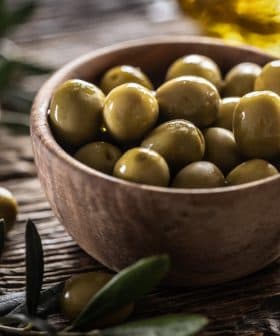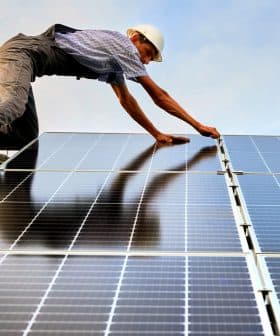Drought, Heat Hit the Table Olive Harvest in Spain

Spanish table olive producers are expecting the weakest harvest in a century, with only 406,000 tons anticipated due to historic drought and heatwaves causing trees to desiccate or drop their olives. Despite this, global table olive production is expected to increase by 3 percent overall, leading to a rise in prices due to the production decline and increased input costs such as diesel, energy, and fertilizer.
Spanish table olive producers are anticipating the weakest harvest in a century, according to Asaja Sevilla.
The Seville-based chapter of the Union of Young Farmers and Ranchers said about 406,000 tons of table olives would be harvested, a decrease of 38 percent compared to the previous year’s record-high harvest of 659,000 tons.
The historic drought and searing heatwaves in Spain, which had already delayed the harvest due to a lack of ripening, caused many trees to desiccate or drop their olives to conserve water as scarcities continued. The association also warned that the damage to some trees might be more long-term.
See Also:2022 Harvest UpdatesAsaja Sevilla added that if it were not for last year’s significant ending stocks of table olives, 429,000 tons, some canners and exporters might not have had any left to sell domestically after meeting their export obligations.
Away from Spain, Asaja Sevilla said they expect production to increase by 35 percent to reach 223,000 tons in Greece, despite a recent hail storm damaging the trees in the northern Chalkidiki peninsula.
The association also expects table olive production to rise 62 percent in Egypt, reaching 808,000 tons.
The rest of the world is expected to experience significant production decreases, with substantial declines in the United States (-59 percent), Portugal (-19 percent), Italy (-17 percent), Morocco (-17 percent) and Argentina (-4 percent).
Overall, global table olive production is expected to reach 1.7 million tons, a 3 percent increase from last year but 5 percent below the rolling five-year average.
However, a poor harvest is not necessarily bad news for everyone in the sector. Asaja Sevilla expects table olive prices to rise due to the production decline and an increase in input costs.
The expected price increase is fueled partially by an anticipated rise in imports from the United States due to its poor harvest.
Asaja Sevilla added the other reason for rising prices results from the 120-percent increase in the cost of diesel, a 180-percent increase in the cost of energy and a 100-percent increase in the cost of fertilizer.









